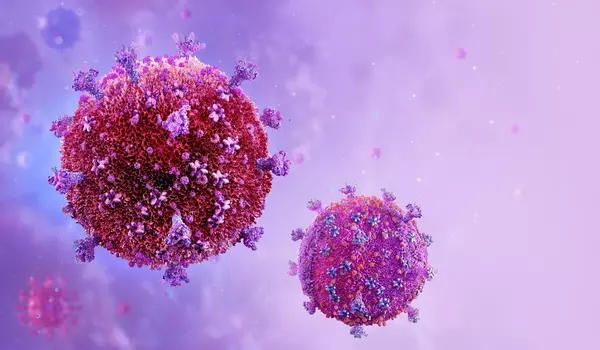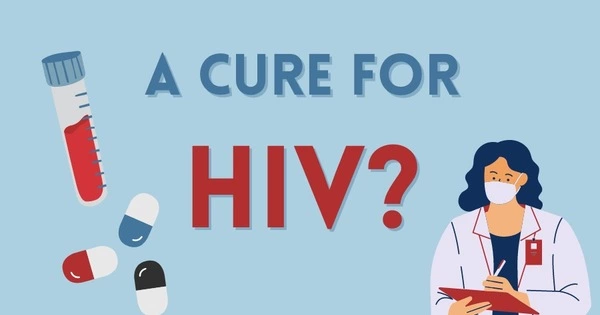It’s important to note that HIV/AIDS research is ongoing, and scientists are constantly looking for new ways to find cures or long-term remission. Several approaches are being investigated, including gene editing technologies such as CRISPR, immune-based therapies, and novel antiviral strategies. These studies are looking for ways to eliminate HIV from the body or achieve long-term viral suppression without requiring lifelong ART.
New animal research is helping to explain why at least five people have become HIV-free after receiving a stem cell transplant, and it may bring scientists closer to developing what they hope will be a widespread cure for the AIDS virus. A new study describes how a stem cell transplant cured two nonhuman primates of the monkey form of HIV. It also reveals that two conditions must exist in order for a cure to occur, as well as the order in which HIV is cleared from the body.
According to new research from Oregon Health & Science University, at least five people have become HIV-free after receiving a stem cell transplant. The study’s insights may bring scientists closer to developing what they hope will become a widespread cure for the virus that causes AIDS, which has infected about 38 million people worldwide.
Published in the journal Immunity, the OHSU-led study describes how two nonhuman primates were cured of the monkey form of HIV after receiving a stem cell transplant. It also reveals that two circumstances must co-exist for a cure to occur and documents the order in which HIV is cleared from the body – details that can inform efforts to make this cure applicable to more people.
This study is helping us home in on the mechanisms involved in making that cure happen. We hope our discoveries will help to make this cure work for anyone, and ideally through a single injection instead of a stem cell transplant.
Jonah Sacha
“Five patients have already demonstrated that HIV can be cured,” said the study’s lead researcher, Jonah Sacha, Ph.D., a professor at OHSU’s Oregon National Primate Research Center and Vaccine and Gene Therapy Institute.
“This study is helping us home in on the mechanisms involved in making that cure happen,” Sacha continued. “We hope our discoveries will help to make this cure work for anyone, and ideally through a single injection instead of a stem cell transplant.”
In 2009, the first known case of HIV cure via stem cell transplant was reported. In Berlin, Germany, a man living with HIV was also diagnosed with acute myeloid leukemia, a type of cancer, and underwent a stem cell transplant. Stem cell transplants, also known as bone marrow transplants, are used to treat certain types of cancer. He was dubbed the Berlin patient because he received stem cells from someone who had a mutated CCR5 gene, which normally codes for a receptor on the surface of white blood cells that HIV uses to infect new cells. A CCR5 mutation makes it difficult for the virus to infect cells and can result in HIV resistance. Since the Berlin patient, four more people have been similarly cured.

This study was conducted with Mauritian cynomolgus macaques, a species of nonhuman primate that the research team previously demonstrated can successfully receive stem cell transplants. While all eight subjects in the study had HIV, four of them received stem cell transplants from HIV-negative donors, while the other half served as the study’s controls and did not receive transplants.
Two of the four recipients were cured of HIV after successfully treating graft-versus-host disease, which is commonly associated with stem cell transplants.
“These results highlight the power of linking human clinical studies with pre-clinical macaque experiments to answer questions that would be almost impossible to do otherwise, as well as demonstrate a path forward to curing human disease,” said Maziarz, a professor of medicine in the OHSU School of Medicine and medical director of the adult blood and marrow stem cell transplant and cellular therapy programs in the OHSU Knight Cancer Institute.
The how behind the cure
Although Sacha and his colleagues were pleased to confirm that stem cell transplantation cured nonhuman primates, they also wanted to understand how it worked. While analyzing the subjects’ samples, the scientists discovered two distinct, but equally important, ways they beat HIV.
First, the transplanted donor stem cells assisted in the death of the recipients’ HIV-infected cells by recognizing them as foreign invaders and attacking them, similar to the graft-versus-leukemia process that can cure cancer.
Second, the virus managed to infiltrate the transplanted donor cells in the two subjects who were not cured. An additional experiment confirmed that HIV could infect donor cells while they were attacking HIV. This led the researchers to conclude that preventing HIV from infecting donor cells via the CCR5 receptor is also required for a cure to occur.
In addition, the researchers discovered that HIV was removed from the subjects’ bodies in a series of steps. First, the scientists noticed that HIV was no longer detectable in the blood flowing through their arms and legs. They also found no HIV in lymph nodes, which are lumps of immune tissue that contain white blood cells and fight infection. Lymph nodes in the limbs were the first to be HIV-free, followed by lymph nodes in the abdomen.
The scientists’ observation of HIV being cleared in a step-by-step manner could aid physicians in evaluating the efficacy of potential HIV cures. Clinicians, for example, could concentrate on analyzing blood collected from both peripheral veins and lymph nodes. This knowledge may also help explain why some patients who received transplants appeared to be cured but later tested positive for HIV. Sacha believes that those patients had a small reservoir of HIV in their abdominal lymph nodes, allowing the virus to persist and spread throughout the body.
Sacha and colleagues continue to study the two nonhuman primates cured of HIV. Next, they plan to dig deeper into their immune responses, including identifying all of the specific immune cells involved and which specific cells or molecules were targeted by the immune system.





